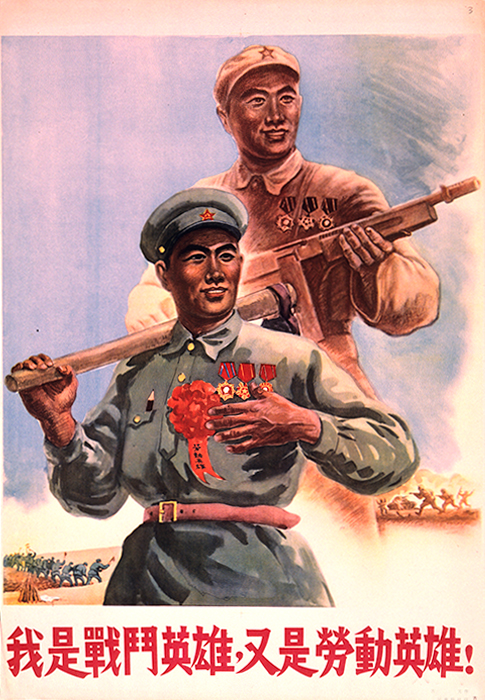In a grand struggle with the Soviet Union for the leadership role of the global communist movement, the Chinese Communist Party (CCP) waged a full-scale war of aggression against communist Vietnam in February and March 1979. Vietnam had abandoned Beijing and joined Moscow as a mutual defense-treaty ally and invaded and toppled China’s Maoist puppet government, the Khmer Rouge in Cambodia. The war was also triggered by an internal CCP power struggle: Deng Xiaoping wanted to consolidate his control over the People’s Liberation Army (PLA) to finally force the CCP General Secretary Hua Guofeng, Mao’s outmaneuvered chosen successor, to cede supreme power to him.
Dubbed as the “Self-Defensive Counterstrike against Vietnam” by China (对越自卫反击战), and “the War against Chinese Expansionism” by Vietnam (Chiến tranh chống bành trướng Trung Hoa), the 1979 Sino-Vietnamese War, as it is commonly known in the rest of the world, began in the early morning of February 17, 1979 with a massive Chinese blitzkrieg against Vietnam along the 800-mile border between the two countries, involving nine PLA army corps and 27 divisions totaling 220,000 troops, outnumbering the Vietnamese defenders by two to one. The war lasted one month, with China unilaterally ceasing fire on March 16, 1979. Each side suffered roughly 30,000 deaths and 35,000 wounded, although both sides have given widely different, unverified numbers of casualties. China defined the war as “punitive,” primarily as a response to Vietnam’s toppling of Beijing’s client state in Cambodia. Territorial conquest was not China’s strategic intent. The war was strictly limited to ground combat, with no naval or air actions involved. The war also did not change the border lines significantly, and in the end the pre-war status quo remained.
The limited and swift nature of the Sino-Vietnamese War was determined by several factors. The most important was the much larger threat against China posed by the Soviet Union in the north. Vietnam and the Soviet Union had just signed a 25-year mutual defense-treaty in November 1978, which infuriated China. A little more than one month later, Vietnam invaded Cambodia and brought down the genocidal and murderous Khmer Rouge, a fanatic fundamentalist Maoist regime. While China had to “punish” Vietnam for this, China’s greater concern was with the potential threat of Vietnam’s treaty ally, the Soviet Union. Throughout the entire war, China could not afford to fight both the Soviet Union and Vietnam simultaneously. As a result, China during the war had to mobilize and deploy over 1.5 million PLA troops close to the much longer Chinese-Soviet border in the north and prepare to counter a Soviet invasion. As a result, the war with Vietnam had to be decisive and quick, as a two-front war against both Vietnam and the Soviet Union would undoubtedly be suicidal. The 1979 Sino-Vietnamese War was in essence an internecine struggle among three major communist countries–– China, Vietnam, and the Soviet Union. It had the potential to self-destroy all three.
Secondly, the large-scale war with Vietnam also exposed the PLA’s humiliating ineptitude and shocking backwardness in comparison with the battle-hardened Vietnamese troops. Many PLA commanders did not know how to read military maps; despite superior artillery firepower and strike capability, the PLA high commanders inexplicably preferred close hand-to-hand combat, which was Vietnam’s outstanding strength, sending many PLA soldiers to brutal and unnecessary deaths. In addition, throughout the war, the PLA’s combat communications turned out to be highly ineffective.
China’s strategy to avoid a self-defeating two-front war was a carefully executed approach that carries long-term ramifications. In fact, the Sino-Vietnamese War started a highly successful CCP geopolitical game of “Playing the America Card,” with China decisively outfoxing and outmaneuvering America’s political leaders who had quixotically preferred to “play the China card” to reach America’s other strategic goals such as defeating the Soviet Union, exiting the Vietnam quagmire, and disarming Pyongyang’s nukes.
Deng Xiaoping’s week-long visit to meet with President Jimmy Carter merely two weeks before China’s blitzkrieg against Vietnam was designed to secure America’s backing and neutralize the Soviet Union’s potential military invasion of China in the event of a Chinese war with Vietnam.
Deng’s goal was easily achieved as America’s pompous and extravagant treatment of the calculating Chinese leader––including a lavish state dinner at the White House attended by luminaries such as former president Richard Nixon and Shirley McClaine, being shuttled on Air Force One around the country to visit Georgia, Texas, and Washington state for banquets and sightseeing––made it clear to Moscow which side the United States would be on should China be invaded by the Soviet Union. In fact, China’s belligerence toward Vietnam and the Soviet Union was further heightened by President Carter’s decision to officially established the U.S. embassy in Beijing on March 1, 1979, the exact half-way point of the ferocious Chinese war against Vietnam.
The war had a profound impact. China failed to achieve its strategic objective of ousting Vietnam from Cambodia, as Vietnam’s occupation would continue until 1989, but with the United States’ inexplicable assistance, China successfully prevented Vietnam’s mutual defense- treaty ally the Soviet Union from an invasion from the North. The war deepened Vietnam’s hostility toward China, and the two communist countries would be engaged in a series of intermittent, brutal small wars for the next 12 years until peaceful negotiation finally took place in 1991, when the Soviet Union under Mikhail Gorbachev was collapsing. While the war facilitated Deng Xiaoping’s rise to supreme power inside the CCP, the PLA’s abysmal performance during the conflict stimulated a Chinese miliary modernization drive that has made the PLA a formidable modern miliary force today, threatening the United States, the very country that lent a helping hand to save the CCP in 1979 from a two-front, unwinnable internecine communist war in an international power struggle for communist ideological correctness.

















